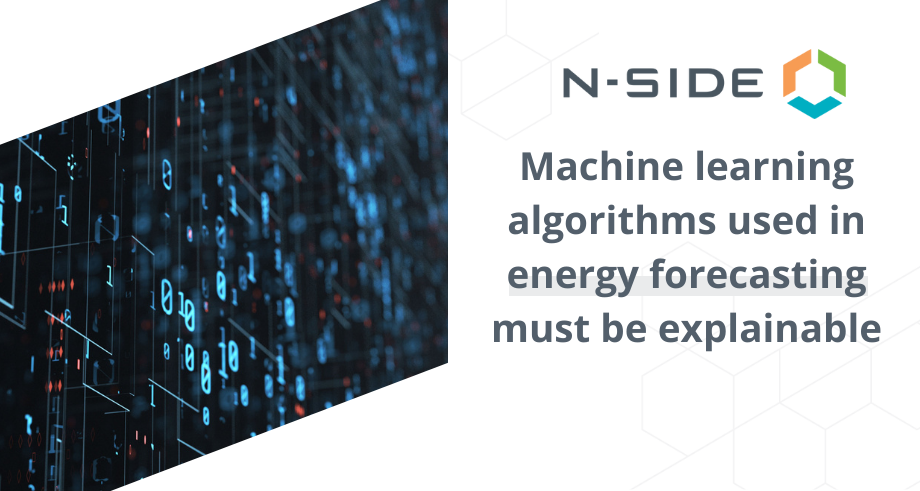Professional Services
Whether your challenge can be solved by our existing products or requires the development of new analytics solutions and market design approaches, our team is ready to help.
How to avoid the AI black box in energy time-series forecasting


Artificial intelligence (AI) is playing a growing role in the day-to-day operations of critical industries. Today, machine learning algorithms are used to screen medical scans for disease, understand the impacts of climate change, and determine access to capital and insurance.
In the energy sector, AI solutions are used to make decisions about operating power grids, buying and selling gas and power commodities, and preventing blackouts.
One of the major ways AI is leveraged in the energy sector is for time-series forecasting. Time-series forecasting refers to making predictions based on historical time-stamped data — using what’s occurred in the past to predict the future.
Time-series forecasting has a variety of applications for energy system operators, power exchanges, and market participants, including:
- Electricity and gas price forecasting
- Renewable load forecasting
- Transmission loss forecasting
- HVDC flow forecasting
- Congestion forecasting
- Arbitrage forecasting (i.e. scheduling the purchase of energy at low prices during off-peak hours to sell it at higher prices during peak hours)
The decisions made based on these forecasts are financially consequential, have regulatory implications, and can impact safety and social welfare.
Because these decisions are so important, it’s imperative we understand the algorithms used to make them. If we make decisions based on forecasts we don’t fully understand, we’re introducing unnecessary risk into power grids and energy markets.
What is the AI black box?
In the field of artificial intelligence, the black box effect refers to processes or algorithms that are not transparent to users or stakeholders.
The black box effect occurs when we can’t see or understand the reasons why an algorithm is reaching certain conclusions. We can understand the inputs and outputs, but not the process used to get from point A to point B.
For that reason, in the energy sector, the black box effect is undesirable. If decisions are being made that can have a massive financial impact or affect the safe operation of the grid, then it’s critical that the processes being used to make these decisions are transparent, reviewable, replicable, and accountable.
Therefore, the machine learning algorithms used in time-series forecasting in the energy sector must be explainable.
That’s easier said than done. In some cases, hundreds or thousands of inputs are being used to make predictions — so even if one has visibility, understanding how those inputs have impacted the forecast can be prohibitively difficult.
Webinar replay: How to avoid the black box effect in energy forecasting
How can explainable AI support time-series forecasting?
Explainable machine learning algorithms help us understand why forecasting solutions output certain predictions.
With explainable algorithms, the contributions of each input to the forecast can be quantified. That means users can understand which inputs were weighted most heavily in a forecasted output, as well as how the relationships between different inputs have impacted the forecast.
At N-SIDE, we’ve developed an explainable AI approach called multiple expansion. This is a way to express the forecasting algorithm as a sum of terms that we call multipoles, which are each made up of one or more inputs. Multipoles offer a visual representation of any given prediction of an AI time-series forecasting algorithm, enabling users and stakeholders to better understand the algorithm.
The contributions of these multipoles can be illustrated as a heatmap, as in this example for HVDC flow forecasting:
Example of a multipole expansion heat map for HVDC flow forecasting
In cases where there are hundreds or thousands of inputs, multipoles can also be sorted into classes for easier understanding of their relative impact. Many times, there are just a few multipoles that contribute the majority of information to a forecast.
Learn more about multipole expansion and HVDC flow forecasting
Benefits of explainable energy forecasting
There are many reasons why an explainable time-series forecasting algorithm is superior to a black box in the energy sector.
First, transparency is necessary to build trust. Accurate forecasts have the power to improve financial performance, sustainability, and social welfare. By providing transparency and building trust, we can increase the adoption of these forecasts.
Transparency also enables us to meet the stringent standards of energy regulations, maintaining reviewability and audit trails.
Finally, explainable AI also enables us to improve forecasts. If forecasts become less reliable, we can react quickly to understand which inputs are driving the reduced performance. Inversely, if forecasts are performing well, drivers of good performance can also be isolated.
N-SIDE energy forecasting solutions
We’re proud to make our energy forecasts available to system operators and traders. Our cloud-based forecasting solution includes a GUI, and can also be connected to existing systems via API.
Users have access to our unique explainable AI methodology and can choose how they want to balance interpretability and complexity for each forecast.



About the Author
With a background in Business Engineering and exposure to various advanced analytics start-ups, Michael is passionate about the energy sector and the development of innovative solutions to accelerate the energy transition. After putting a strong focus on the development of N-SIDE Energy activities towards different types of actors, he now has specific expertise in energy forecasting solutions for market participants. Michael now leads the Energy Forecasting Platform team at N-SIDE.
Michael Malcorps














